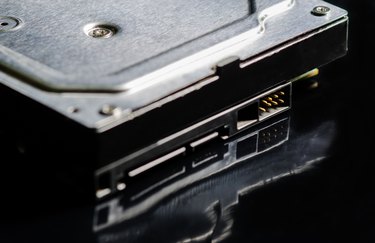
Small Outline Dual Inline Memory Module and Unbuffered Dual Inline Memory Module are two terms that describe types of computer memory. While UDIMM is a generic term that applies to most memory modules, SO-DIMM modules are used almost exclusively in notebook computers.
UDIMM
Video of the Day
A buffered memory module uses a microprocessor to pass data before going to or from the module's memory chips. This makes it possible for a computer to have many memory modules installed without overwhelming the motherboard's memory controller and causing system instability. Many computers with more than four memory slots require buffered memory. Notebooks and typical desktop computers have four memory slots at most and therefore do not require buffered memory. As a result, most computers have UDIMMs installed.
Video of the Day
SO-DIMM
Space is at a premium in notebook and small-form-factor desktop computers, making it difficult to find room for full-sized memory modules. As a result, these computers use memory modules with smaller circuit boards. SO-DIMMs make it possible for a small computer to have memory capacity comparable to full-sized computers.
Identification of SO-DIMMs
You can identify SO-DIMMs primarily by their size; a standard DIMM is slightly over five inches long and an SO-DIMM is slightly over 2.5 inches long. A DDR3-SDRAM SO-DIMM has 204 pins and a DDR3-SDRAM DIMM has 240 pins.
Identification of UDIMMs
An unbuffered DIMM can be either a full-sized DIMM or an SO-DIMM. Because buffered memory is necessary only for server and workstation computers, all SO-DIMMs are UDIMMs. In addition, most full-sized DIMMs are UDIMMs. A UDIMM lacks the microprocessor present in the middle of buffered memory modules.